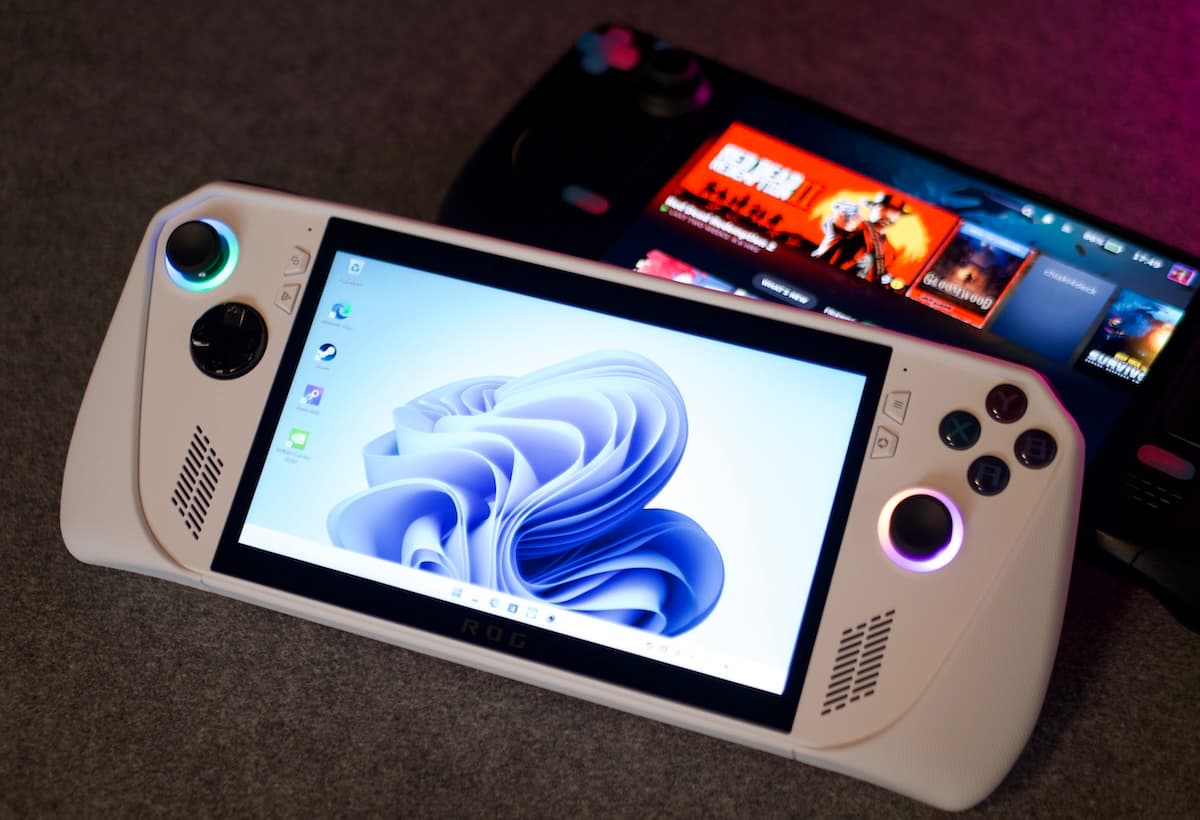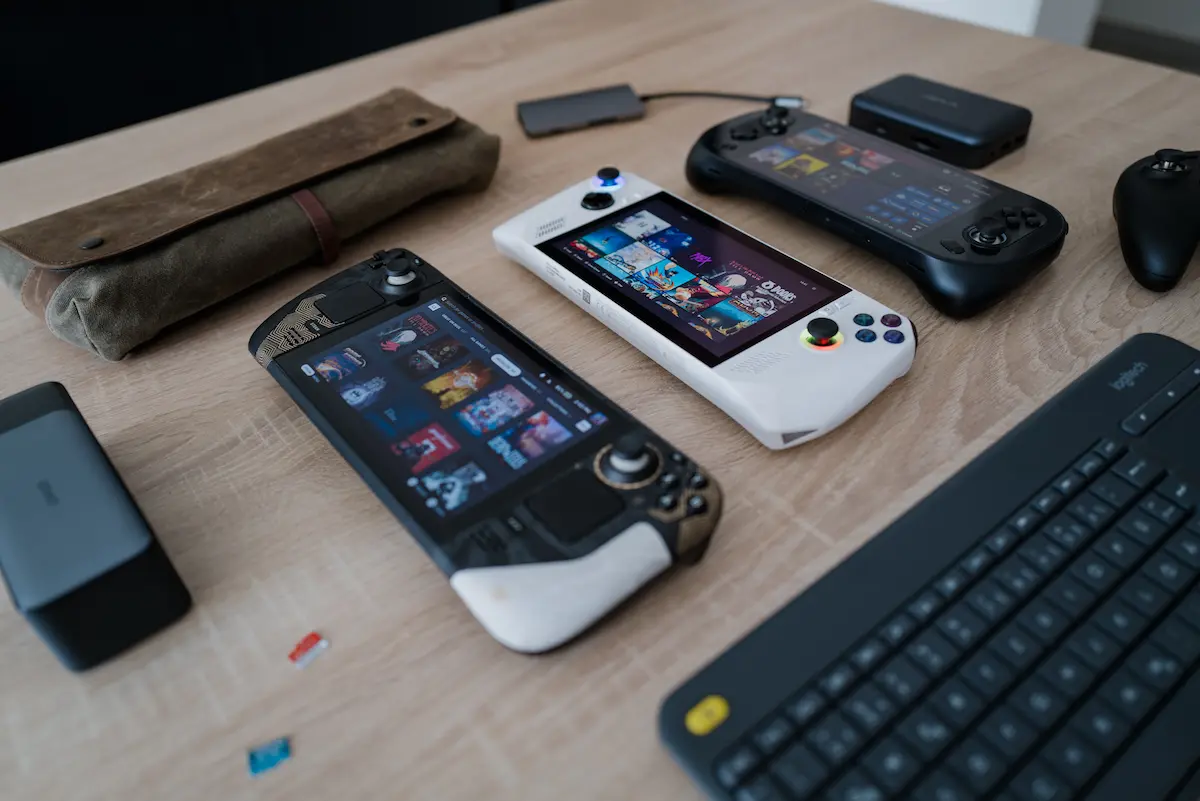After spending time with countless other handhelds Timo highlights the Windows problem that's holding the ASUS handheld back.
Competition is a good thing. Companies continuously pushing each other to move things forward is a win for us all. So — with no real burning desire to engage in any daft console tribalism — when a serious competitor to Valve’s handheld PC darling the Steam Deck finally showed up, I was more than ready to see what the other side had to offer.
However, after my first (albeit late) week with an ASUS ROG Ally, my love of all things Steam Deck is now stronger than ever. The ROG Ally has an issue — ASUS, if you’re listening let me know, we need to talk.
A Promising Start
ASUS first announced their take on a PC gaming handheld back in April 2023. The news, curiously dropped by way of an April Fool’s tease, went surprisingly viral. Valve's Steam Deck was already here, but people were clearly beginning to crave alternative handheld gaming PC options.
The Steam Deck showed us what’s now possible, and although the idea of a more powerful alternative to Gabe Newell's Linux-based handheld was nothing new (thanks to regular devices from the likes of AYANEO), having another mobile gaming powerhouse from a renowned manufacturer like ASUS raised expectations a fair bit.
On paper, the Ally looked to be a nice step forward. A 120Hz screen that also boasts Variable Refresh Rates (VRR) — crucially missing on the Steam Deck. An option to connect an external GPU, turning the device into a full-blown 4K gaming rig. These two features alone represented a massive unique selling point for the new ASUS offering and put the fresh device a step above any other available handheld on the market.
At launch it was clear that the ASUS ROG Ally had plenty of promise, and was packed with attractive tech and features — it’s funny now to look back, as one of its biggest flaws is rooted in something so simple to fix. At first, most consumers may even consider this flaw to be an upgrade over the experience found on Steam Deck — but little did they know.
Now, admittedly, I’m a little late to the ROG Ally party. It launched in June 2023, but being able to judge this handheld months after launch is a good thing: ASUS has surely taken their time to improve the device, iron out any initial issues, and made it age like fine wine, right?
So what’s this glaring issue? Well, before we get to that, let’s briefly highlight what the Ally gets right.
The quality of this ASUS handheld delivers on many fronts.
The Ally is genuinely a well-built, great-looking yet hefty chunk of tech, with some really neat features. The screen is amazing, and 120Hz VRR nearly lets you forget the lack of an OLED panel, while the front-facing speakers sound awesome. Even the peripherals are solid, and the style of the device itself gets many bonus points for its white design, offering a stark contrast to the Steam Deck.
Sure, I do miss good trackpads to survive mouse-based interactions and some of the amazing Steam Input features (which let you utilise the Deck inputs in every way imaginable).
A proper docking station would also be a nice addition — ASUS somehow decided to opt for a cheap cardboard-like stand without any added functionalities (thankfully alternative options exist).
All in all, though, the ASUS ROG Ally is a serviceable, powerful device, and its Z1 Extreme APU easily outperforms the Steam Deck's Van Gogh chip on paper.
But aside from poor battery life, which is to be expected with a 40Wh handheld running at any wattage higher than 20W, I didn't tell you about the one thing that turned my first week with the Ally into a nightmare. The one thing that ruins everything.

What holds the ROG Ally back
I’m talking about the software experience — specifically the Windows operating system at the heart of the Ally.
Yes, the main differentiator between the ROG Ally and the Steam Deck doesn't lie in its hardware. While Valve's iconic handheld runs on a heavily optimised Linux, ASUS decided to go with Microsoft's Windows. Ironically, the operating system that most people would prefer at first glance. As the most popular OS out there, you'd expect to feel right at home, while having access to games and services like the Xbox Game Pass, you wouldn't even be able to play on a Deck at all.
Calling Windows practically unoptimised as a suitable OS for handhelds would be a massive understatement. 90% of its navigation happens via mouse (no trackpads here remember), and the overall structure isn't really designed to be used on small screens. This, of course, is just the tip of the iceberg, as a plethora of annoyances and issues become more obvious, especially if you're used to the comfort Valve offers with their Linux-based SteamOS.
If I had to pick one specific issue that really spoiled the experience on my new ASUS ROG Ally the most, I would definitely highlight the lack of proper 'quick resume' functionalities. For context: You can put your Deck to sleep at any time by simply pressing the power button once. Comparable to the standby of a Nintendo Switch, if you will, this will immediately pause all processes and any running game. When you decide to go back to business, simply pressing the power button again wakes up the handheld and lets you pick up right where you left off.
Windows, in comparison, does indeed come with hibernation and standby functions, but these aren't meant to put games on hold in order to proceed at some point later in time. The game's process often ends up crashing or locking the whole device up completely. ASUS worked hard on the 'modern standby' feature to fix this in some way, not without slapping a fancy name on it. Yet, I can count the times 'Extreme Standby' worked out as intended, on just one hand.
Another downside is how the ASUS ROG's companion software, Armoury Crate, (under)utilises power management and, therefore, the device's capabilities. You can set the Thermal Design Power (short TDP) at will and even apply various settings on a per-game basis, but there's no form of dynamic TDP handling at all.
This results in the constant need for manual balancing between battery consumption and the actual performance of any game. Valve, once again, did an outstanding job with how SteamOS approaches these things, which ultimately means more time spent on actual gaming on your handheld rather than worrying about technical flaws.
Of course, there are some ways to implement features like this on Windows — through free third-party tools like Handheld Companion. But the fact that ASUS didn't implement an official, baked-in solution for that after nearly a year is simply beyond me. I fully appreciate Windows' benefits, such as access to the Xbox Game Pass and better clients for stuff like GeForce Now. But in my daily life, these regularly get overshadowed by such flaws, which only scratch the surface. Don't get me started on the random caveats every Windows user has gotten used to by now.
At this point, and after spending time with countless other handhelds as well, I can't sugarcoat it anymore: The Steam Deck spoiled me in a way that makes it hard for me to justify using Windows on a gaming handheld.

The console-like experience you get with SteamOS, which takes care of annoyances in the background while you're enjoying nearly worry-free gaming—this is what Microsoft and ASUS should chase for.
Regardless of the net performance of the device itself, in the end, the actual core user experience is what matters most. A gaming handheld should be a platform meant to escape reality. One that can quickly fill the often way too short time gaps between our obligations to work, study, family, and everything else. A way to dive into our beloved digital worlds without having to spend any fraction of this precious time on additional installs, tinkering, or troubleshooting. No matter how many frames per second you'll get on a ROG Ally, it's worth nothing when, say, the controller disconnects mid-game because Windows did some weird stuff in the background, you’re left feeling annoyed. The device often works against you.
Even when things seem to run well, you still can't quickly put a ROG Ally to sleep and set it aside — as you’re left knowing that you can’t pick up right where you left, without fear that the device may have killed your game progress.
Actually, you can, if you decide to ditch Microsoft's operating system in favour of something more Deck-like. Thankfully, there are many variants of Linux available that even come with a fully prepared SteamOS frontend, such as Bazzite or ChimeraOS, to name a few. They all come with their own benefits and flaws, with the setup process itself being a mini-game of its own. But once it's up and running, you can focus on what these handhelds are meant for. It shouldn’t have to be this way though.
Valve planned to release an official generalised SteamOS image one day, which would streamline everything so that everyone could easily replace Windows with a fully functioning console-like experience on any of their devices. Unfortunately, they have remained silent about this plan lately and are exclusively focused on improving the Steam Deck platform. SteamOS itself is open-source, however, and virtually nothing would prevent an OEM like ASUS from adapting it for their own devices. Sadly, their priorities seem to look different, so it'll be up to you to take things into your own hands if you want a fix.
The ROG Ally has such promise as a Steam Deck alternative, but it's surprisingly held back by the Windows experience. Either Microsoft needs to step up and offer a refined version of their OS, designed with the needs of these handheld devices in mind, or manufacturers such as ASUS need to explore other options.






